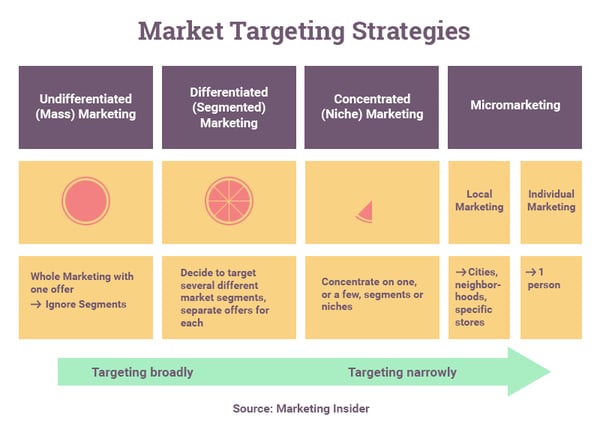Industrial markets can be segmented into some variables employed in consumer market segmentation. Such variables include geographic, benefits sought, and usage rate. Apart from these, several other variables can also be employed. For instance, Bonoma and Shapiro (1983) have suggested segmenting the business market with the variables.
The demographic variables among others, are the most important, filled by the operating variables, then, down to the personal characteristics of the buyer. You will observe that the table lists major questions that business marketers should ask in determining which segments and customers to serve. For instance, a tyre manufacturing company should first decode which industries it wants to serve.
The company can sell tyres to manufacturers of automobiles, trucks, farm tractors, forklift trucks, or aircraft. From a chosen target industry, it can
Demographic
1. Industry: which industries should we serve?
2. Company size: What size companies should we serve?
3. Location: What geographical areas should we serve? Operating Variables
4. Technology: What customer technologies should we focus on?
5. User or nonuser status: Should we serve heavy users, medium users, light users, or nonusers?
6. Customer capabilities: Should we serve customers needing many or few services?
Purchasing Approaches
4. Purchasing-function organization: Should we serve companies with highly centralized or decentralized purchasing organizations?
5. Power structure: Should we serve companies that are engineering dominated, financial y dominated, and so on?
6. Nature of existing relationships: Should we serve companies with which we have strong relationships or simply go after the most Desirable companies?
7. General purchase policies: should we serve-companies that prefer leasing? Service contracts? System purchases? Sealed bidding?
8. Purchasing criteria: Should we serve companies that are seeking quality? Service? Price?
Situational Factors
6. Urgency: should we serve companies that
need quick and sudden delivery or service?
7. Specific application: should we focus on certain applications or our product rather than al applications?
8.Size of order: Should we focus or smal orders?
9.
Personal Characteristics
9. Buyer-seller similarity: Should we serve companies whose people and values are similar to ours?
10. Attitude toward risk: Should we serve risk-taking or risk-avoiding customers?
11. Loyalty: Should we serve companies that show high loyalty to their supplier?
Major Segmentation variables for Business markets further segment by customer size. For example the company might set up separate operations to sell to both large and small customers.
TARGET-MARKET STRATEGIES
Once a company has segmented the total market for its product, the next thing is for it to decide how many and which ones to decide. In order to arrive at a good decision, management has to evaluate all the market segments, by following some guidelines in selecting the target market(s).
EVALUATING THE MARKET SEGMENTS
In evaluating different market segments, management needs to consider some factors, which act as guidelines for target market selection. General y, the firm must ask whether a potential segment has the characteristic that make it generally attractive, such as size, growth, profitability, scale economics, and low risk. In addition, the firms must consider whether investing in the segment makes sense vis-a vis the firms' objectives and resources. On these bases, some attractive segments could be dismissed for lack of compatibility with the firm’s long-run objectives. Furthermore, a seemingly attractive segment could be dismissed if the firm lacks one or more necessary competences to offer superior value.
GUIDELINES IN SELECTING A TARGET MARKET
From the general premises laid down in section 3.5.1, four guidelines can be followed in determining which segments should be the target markets:
(i) the target market(s) should compatible with the organization goals and image;
(ii) the market opportunity represented in the target market(s) should match the
company's resources;
(iii) the target market(s) should generate sufficient sales volume at a low enough
cost to result in a profit and
(iv) the target market(s) should have the least and smallest competitors.
Ordinarily, a seller should not enter a market that is already saturated with competition unless it has some overriding differential advantage that will enable it to take customers from existing firms.
TARGET MARKET STRATEGIES
After thoroughly evaluating the different segments, the company can follow one of three strategies: market aggregation, single segment concentration, or multiple segments targeting
AGGREGATION STRATEGY
The market-aggregation strategy is also known as a mass-market or an undifferentiated market strategy. Here, a seller treats its total market as a single segment. This strategy is not very common. However, it is usual y selected after a firm has examined a market for segments and came to the conclusion that the majority of customers in the total market are likely to respond in a very similar fashion to one marketing mix.
In this case, the company develops a single product for this mass audience; develops one pricing structure and one distribution system for its product; and uses a single promotional programme aimed at the entire market. This strategy is appropriate for firms that are marketing an undifferentiated, staple product such as salt or sugar.











0 Comments